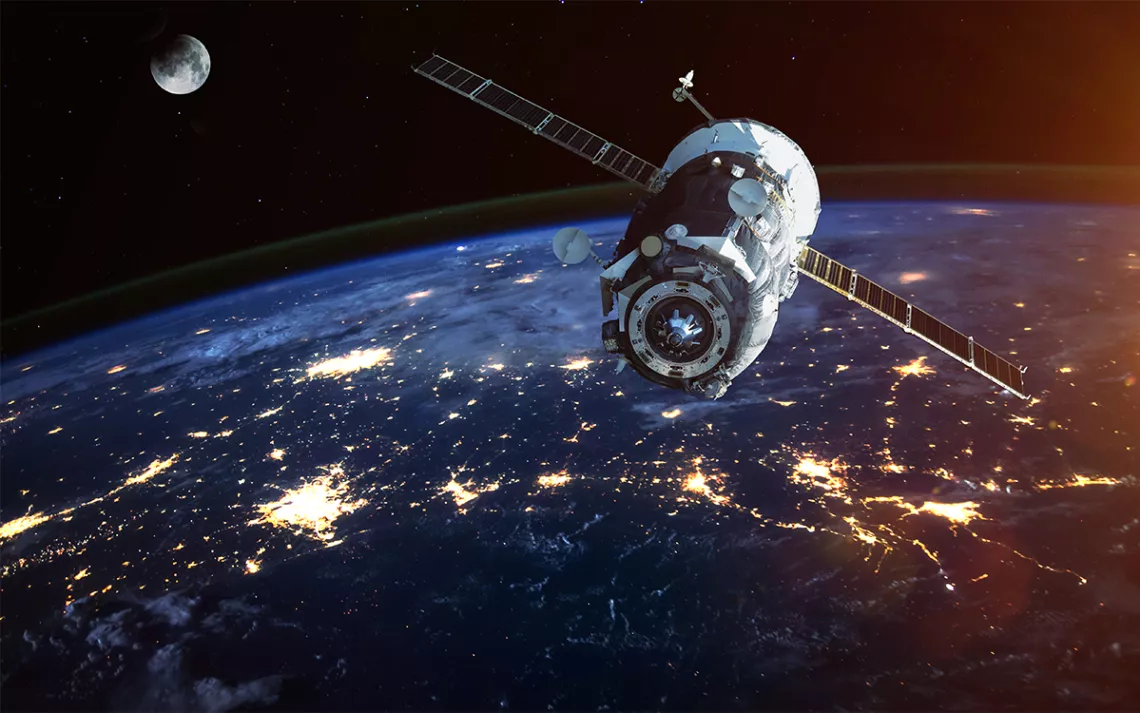February Astronomical Highlights: "Humanity Star" and a Trio of Planets
Things new and old grace this month’s night sky

Photo by forplayday/iStock
Winter skies display more bright, sparkling stars than other seasons do, and this year especially, the planets have left the stage to give the stars their chance to shine, hovering visibly in the morning sky instead. At the end of the month, brilliant Venus will emerge from the glow of sunset to become the “evening star.”
This February, a new “star” is joining the heavens. The company Rocket Lab is launching a satellite called the “Humanity Star” for the sole purpose of adding a bright, flickering light in the sky to “create a shared experience for everyone on the planet.” On the one hand, it’s wonderful to motivate newcomers to join in stargazing, and it’s incredible that once-revolutionary technologies are now commonplace enough to become novelties. But the endeavor does raise some questions.
Do we really need something like this when we already have stars and the moon to observe? And why add to the “space junk” that’s already orbiting Earth? The Humanity Star is set to completely burn up and re-enter Earth’s atmosphere before the end of the year. The company claims the star will be brighter than all other stars but doesn’t share a magnitude estimate. An early video taken of the satellite shows it appearing much like a blinking plane crossing the night sky. The manmade stargazing object has troubled astronomers for setting a precedent of generating unneeded light pollution in space when earthly sources are already making scientific observations challenging. We’ll keep an eye out for the interloper and report back any relevant observations.
Amateur astronomers have been tracking satellites for as long as people have been launching them. At Heavens-above.com, you can enter your location and see what objects will be appearing in the sky overhead, from the new Humanity Star to the International Space Station to the Hubble Space Telescope and Iridium satellite flares. Iridium flares are some of the brightest manmade objects that can be seen, appearing as sharp flashes of light when they top out at -7 magnitude and brighter. Brilliant Venus at its brightest only reaches -4.9.
If you’re up before the lazy sun this month, you can spot Jupiter highest in the east, leading a chain of planets up from the horizon. Mars and Saturn pepper the dark sky below the king of the planets. Between February 7 and 11, the moon makes this view extra scenic as it visits this trio of planets. Keep an eye on Mars around February 15, when the planet named for the Roman god of war (Ares in Greek), passes Antares (Anti-Ares), a reddish star in Scorpius considered to be Mars’s rival. Which one looks more blood-red to you?
Because January and March both host two full moons this year, February has no full moon, which is rare. The last time this happened was in 1999. February does host a partial solar eclipse on February 15 that will be visible in sparsely populated parts of the globe, including the southern reaches of South America and Antarctica.
 The Magazine of The Sierra Club
The Magazine of The Sierra Club



